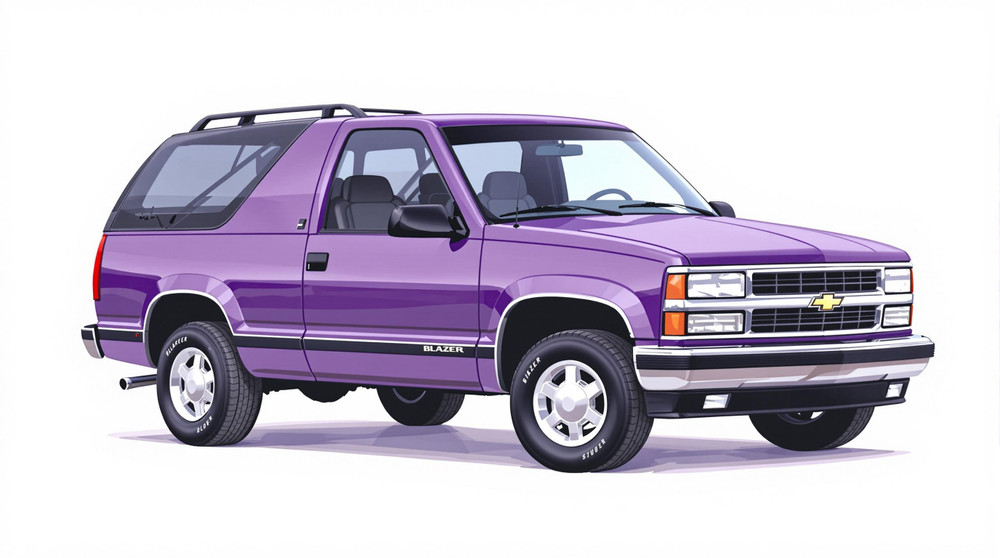Image of 1998 Chevrolet Blazer, Note: These illustrations use artistic license and may differ from actual historical models.
Performance Metrics
Fundamental Metrics
Emotional Appeal
MMP Rating
| Engine Specifications | |
|---|---|
| Engine: | 4.3L V6 |
| Displacement: | 262 cu in (4.3L) |
| Horsepower: | 190-200 hp |
| Torque: | 250 lb-ft |
| Compression Ratio: | 9.2:1 |
| Ignition System: | Electronic |
| Cooling System: | Liquid-cooled |
| Performance Specifications | |
| 0-60 Time: | 9.5 seconds |
| 1/4 Mile Time: | 17 seconds |
| Top Speed: | 108 mph |
| Transmission and Drive | |
| Drive Type: | Rear-wheel drive (RWD) or Four-wheel drive (4WD) |
| Transmission Type: | 4-speed automatic |
| Fuel and Efficiency | |
| Fuel System Type: | Fuel injection |
| MPG: | 16 city / 21 highway |
| Dimensions and Brakes | |
| Brakes: | Front disc / rear drum |
| Wheelbase: | 100.5 inches |
| Weight: | 3,900 lbs |
Note: Specifications for classic cars are given to the best of our ability, considering the limited and variant data available.
Unveiling the Trailblazing 1998 Chevrolet Blazer
The 1998 Chevrolet Blazer stands as a testament to the era of rugged American SUVs, a time when utility and durability were paramount. Born from the stables of General Motors, this mid-size SUV carved its niche in an ever-expanding market of on-and-off-road vehicles. With a lineage tracing back to its debut in 1969, the Blazer was Chevrolet's answer to the growing demand for versatile family vehicles with a tough edge. A standout fact about this model year is that it was one of the first to offer an OnStar communication system as an option, marking a significant step towards integrated vehicle telematics.
Design and Innovation
The exterior of the 1998 Chevrolet Blazer was designed with a balance of form and function. Its boxy silhouette exuded strength, while subtle curves added a touch of sophistication. The interior was crafted with comfort in mind, featuring plush seating and durable materials built to withstand the rigors of daily use. Technologically, it boasted features like power windows, locks, and an optional CD player—luxuries at the time. Color options ranged from classic Black and Summit White to the more adventurous Dark Cherry Red Metallic, with the latter often catching admiring glances on the road. The Blazer was available in two-door and four-door body styles, with the four-door version being particularly popular for its added practicality.
Historical Significance
The 1998 Blazer's impact on automotive design was subtle yet significant. It helped solidify the SUV as a mainstay in American driveways by offering a blend of passenger car comfort and truck-like capability. This model stood out for its unibody construction—a departure from the traditional body-on-frame design—which contributed to better handling and ride quality compared to its predecessors.
Performance and Handling
Under the hood, the '98 Blazer was powered by a robust 4.3-liter V6 engine that delivered a respectable top speed and could accelerate from 0-60 mph in just over 10 seconds—a commendable feat for an SUV of its size. Drivers appreciated its ability to tackle bumps with ease and maintain composure on windy roads. Behind the wheel, one could enjoy the throaty growl of the V6 engine while experiencing a smooth ride that balanced off-road readiness with on-road comfort.
Ownership Experience
The Chevrolet Blazer was often seen as a daily driver that could double as an adventure vehicle for weekend getaways. Its reliability was one of its strong suits; however, like any vehicle of its age, some owners faced maintenance challenges typical of older models. Parts were generally readily available, making repairs manageable for those with basic mechanical knowledge.
Fun Facts
A lesser-known tidbit about this generation of Blazers is that some were used by law enforcement agencies as patrol vehicles—evidence of their reliability and durability under strenuous conditions. While not known for setting speed records, they did achieve significant sales figures, cementing their place in automotive history. Criticisms typically revolved around fuel economy—a common issue among SUVs of this era.
Collector's Information
As for collectability, while not yet reaching classic status like earlier Blazers, well-maintained examples can fetch prices ranging from $2,000 to $5,000 depending on condition and mileage. Production numbers were substantial; hence rarity isn't a factor currently influencing value. However, as these vehicles age and fewer remain on the road in good condition, their value may appreciate modestly over time.
Conclusion
The 1998 Chevrolet Blazer remains an emblematic figure in the evolution of SUVs—cherished for its no-nonsense approach to design and functionality. It stands as a reminder of an era when vehicles were built to serve faithfully as both workhorses and family haulers—a true American utility vehicle through and through.
1998 Chevrolet Blazer Catalog of Parts
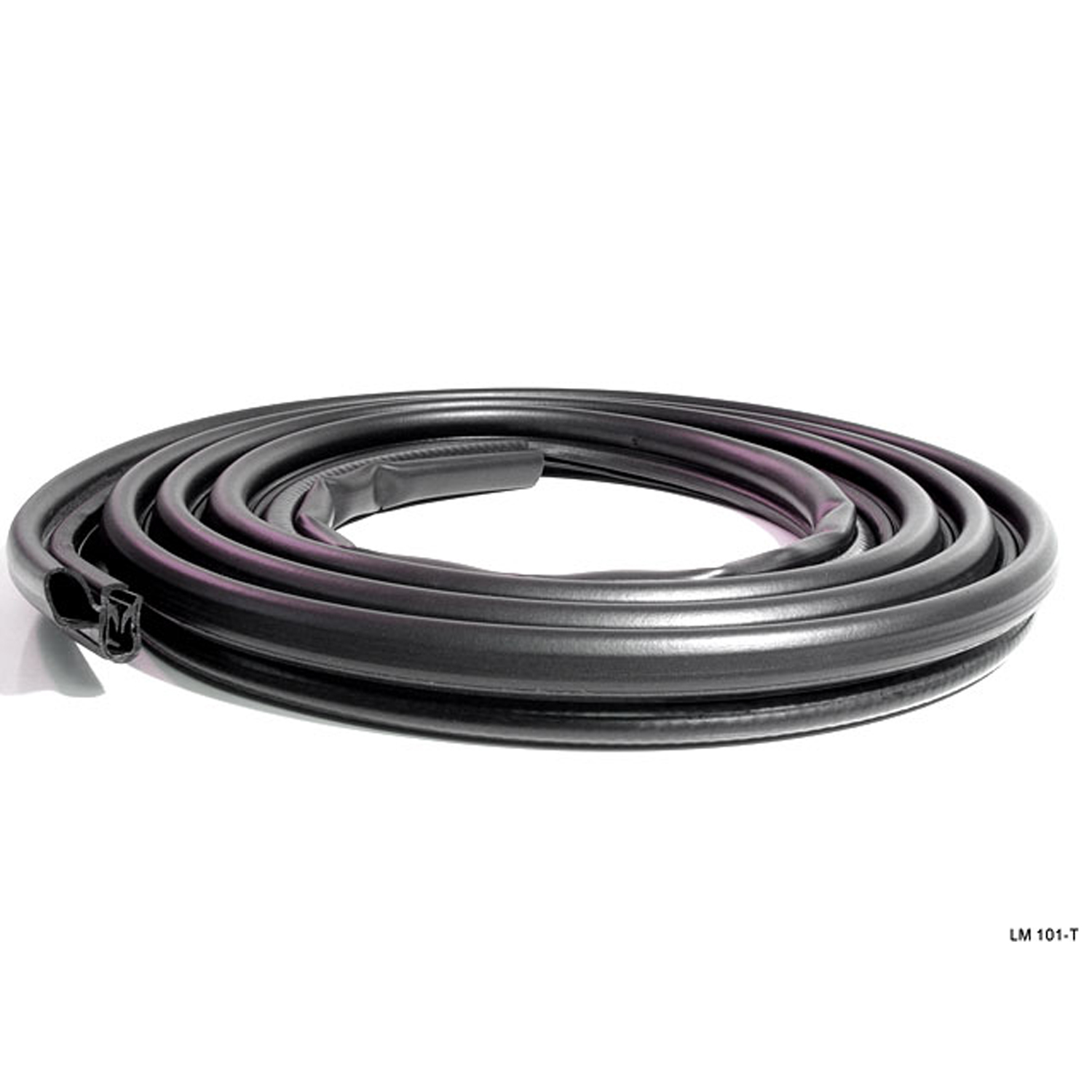 1998 Chevrolet Blazer Door seal. (Imported)-IS-LM 101-TDoor seal. (Imported). Replaces the front left- and right-side door seal (located on the body) for the old style '88-'02 Chevrolet and GMC C/K 1500/2500/3500 series standard, extended cab and quad (crew) cab pickup trucks except front right side on extended cab models with access door. Replaces front left- and right-side door seals (on body) for '92-'00 Chevrolet Blazer/Tahoe, GMC Yukon, Cadillac Escalade and '92-'99 Chevrolet Suburban ' except front right side on extended cab models with access door. Replaces OEM# 15758703. Each.
1998 Chevrolet Blazer Door seal. (Imported)-IS-LM 101-TDoor seal. (Imported). Replaces the front left- and right-side door seal (located on the body) for the old style '88-'02 Chevrolet and GMC C/K 1500/2500/3500 series standard, extended cab and quad (crew) cab pickup trucks except front right side on extended cab models with access door. Replaces front left- and right-side door seals (on body) for '92-'00 Chevrolet Blazer/Tahoe, GMC Yukon, Cadillac Escalade and '92-'99 Chevrolet Suburban ' except front right side on extended cab models with access door. Replaces OEM# 15758703. Each.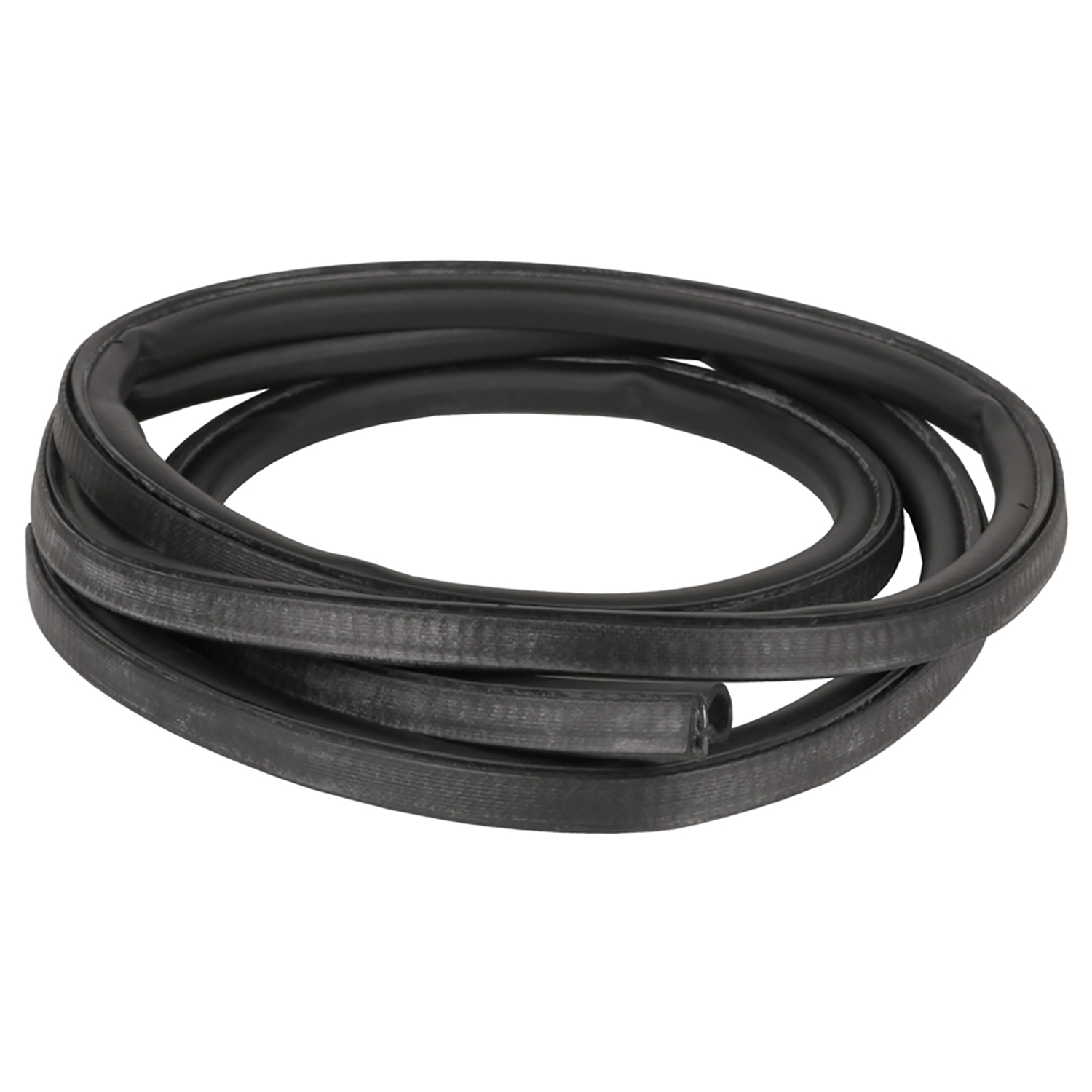 1998 Chevrolet Blazer Door Seal Rear, 92-99 GM Full Size SUV, 92 00 GM C/K 3500 Truck, Left or Right-LM 101-SThis seal presses on the pinchweld on the body. Fits either left or right side of the rear doors. This product is made from the original specs and with high quality ozone resistant materials for a great fit and long life.
1998 Chevrolet Blazer Door Seal Rear, 92-99 GM Full Size SUV, 92 00 GM C/K 3500 Truck, Left or Right-LM 101-SThis seal presses on the pinchweld on the body. Fits either left or right side of the rear doors. This product is made from the original specs and with high quality ozone resistant materials for a great fit and long life.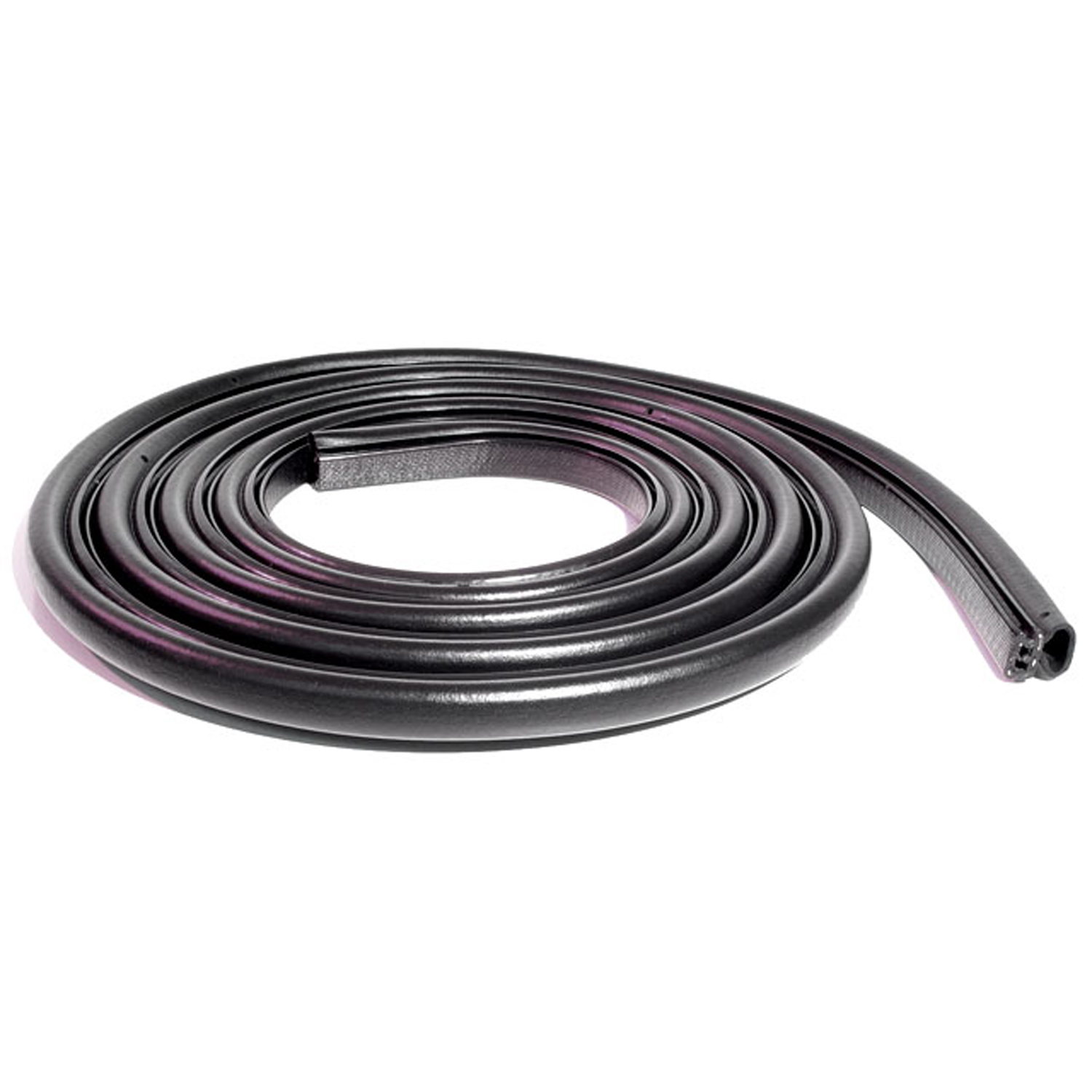 1998 Chevrolet Blazer Front Molded Door Seal. Fits either side. Each-LM 120-TFront Molded Door Seal. Fits either side. Each
1998 Chevrolet Blazer Front Molded Door Seal. Fits either side. Each-LM 120-TFront Molded Door Seal. Fits either side. Each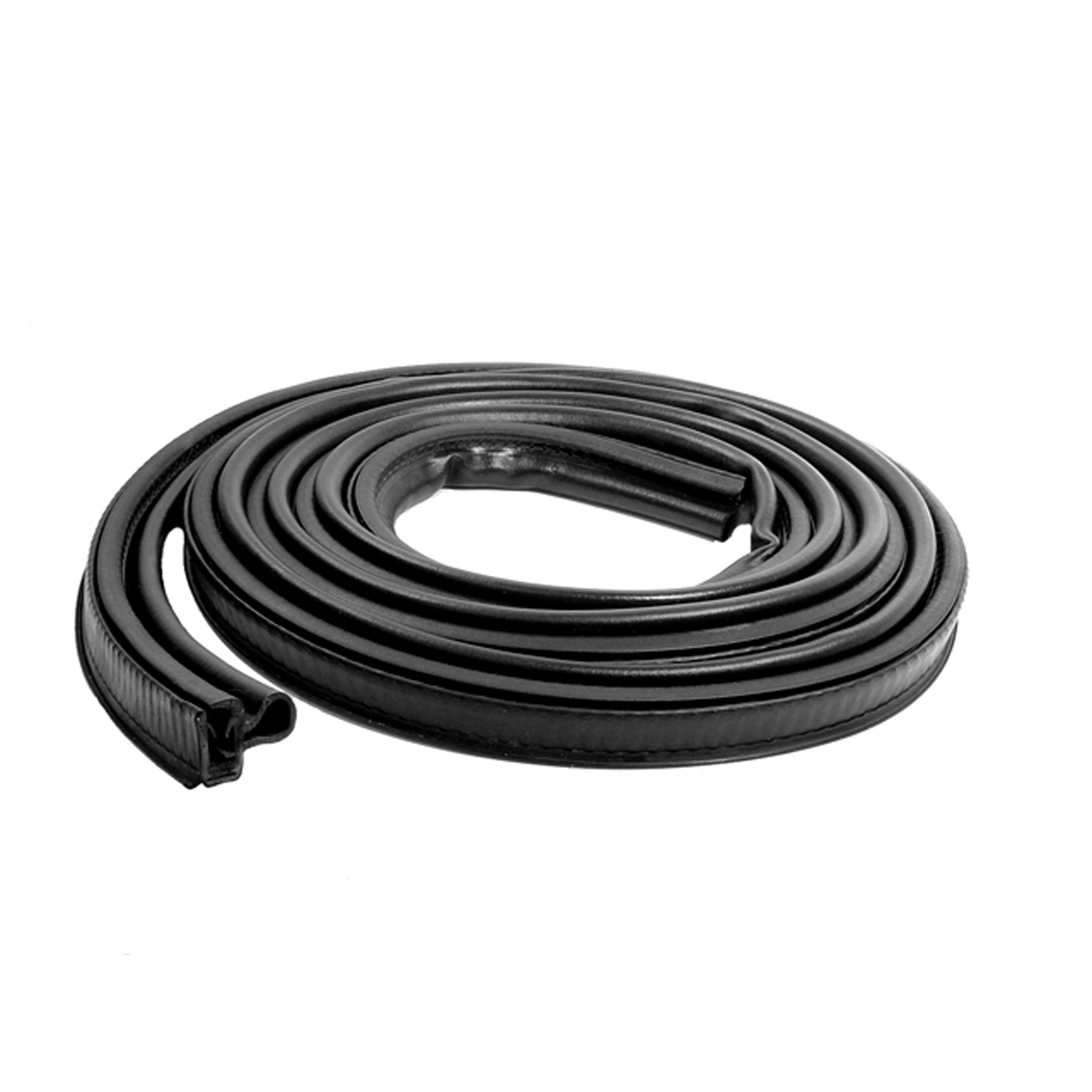 1998 Chevrolet Blazer Rear Door Seal. Fits rear left and right side. Each-LM 120-URear Door Seal. Fits rear left and right side. Each
1998 Chevrolet Blazer Rear Door Seal. Fits rear left and right side. Each-LM 120-URear Door Seal. Fits rear left and right side. Each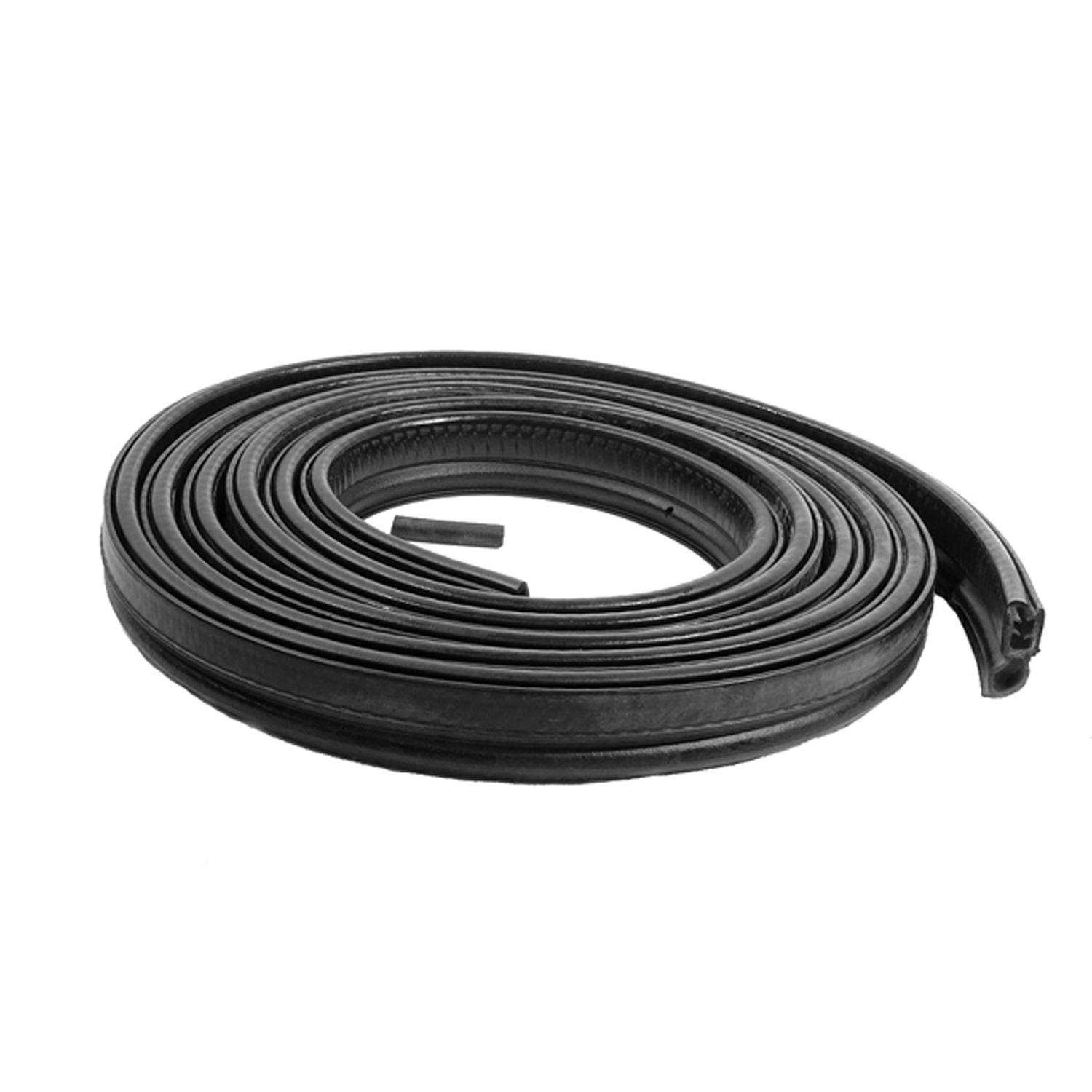 1998 Chevrolet Blazer Liftgate seal. Fits 2-door without full liftgate-TG 10-BLiftgate seal. Fits 2-door without full liftgate. Replaces OEM# 15735059. Each.
1998 Chevrolet Blazer Liftgate seal. Fits 2-door without full liftgate-TG 10-BLiftgate seal. Fits 2-door without full liftgate. Replaces OEM# 15735059. Each. 1998 Chevrolet Blazer Liftgate seal. Fits 4-door without full liftgate-TG 10-CLiftgate seal. Fits 4-door without full liftgate. Replaces OEM# 15735058. Each.
1998 Chevrolet Blazer Liftgate seal. Fits 4-door without full liftgate-TG 10-CLiftgate seal. Fits 4-door without full liftgate. Replaces OEM# 15735058. Each.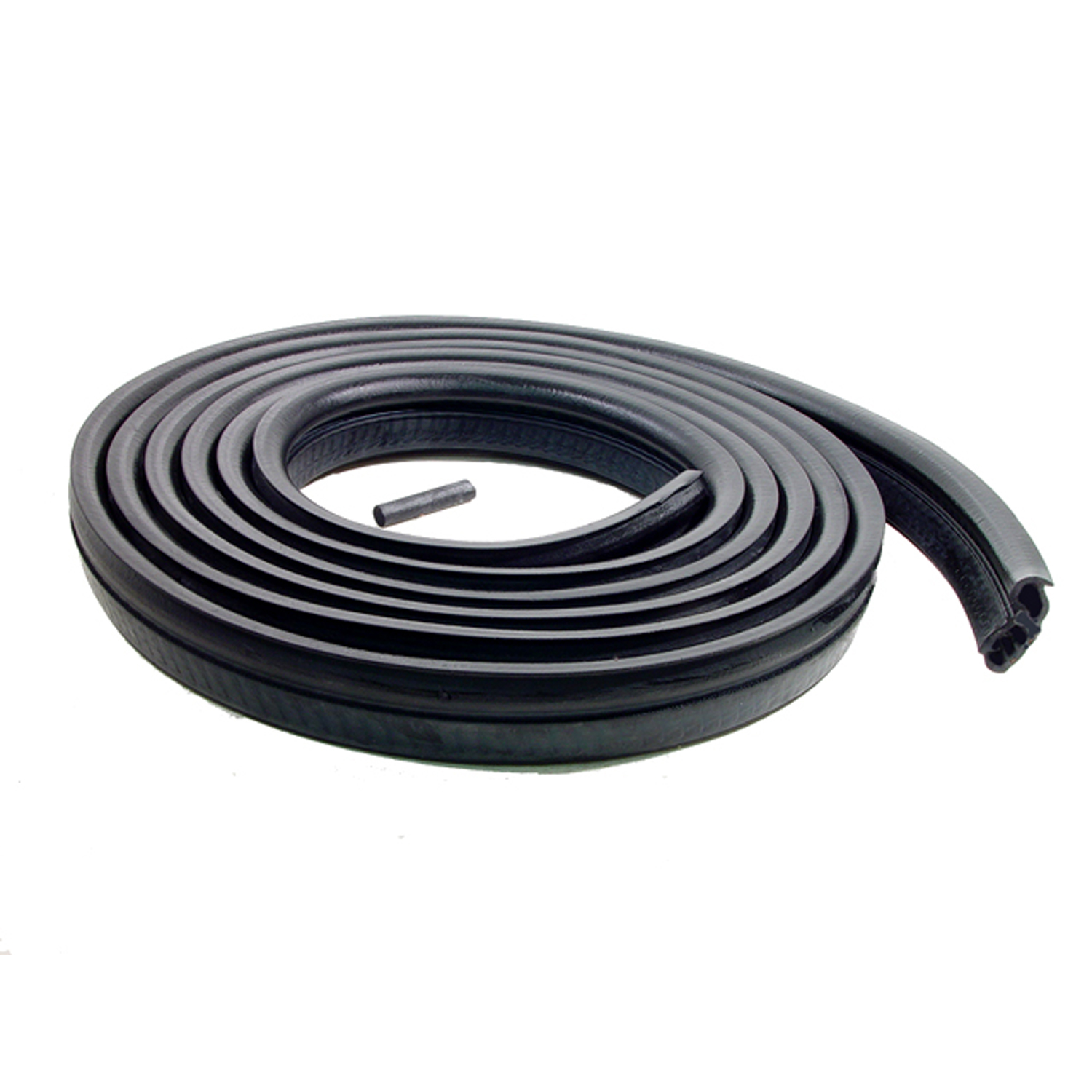 1998 Chevrolet Blazer Liftgate seal-TG 10-DLiftgate seal. Fits 2-door or 4-door models with full liftgate. Replaces OEM# 15757213. Each.
1998 Chevrolet Blazer Liftgate seal-TG 10-DLiftgate seal. Fits 2-door or 4-door models with full liftgate. Replaces OEM# 15757213. Each.Why Choose Metro?
For over 100 years, Metro Moulded Parts has been the pinnacle of quality in classic car restoration parts. Our commitment to precision and authenticity in every component ensures a perfect fit and an OEM-level appearance.
- Expert Craftsmanship & Quality: Each part is a testament to our dedication to reliability and perfection, crafted from original designs and thoroughly tested.
- Advanced Technology: We use cutting-edge techniques to create flawless, long-lasting parts that surpass others in performance.
- SuperSoft Sponge – The Ultimate Door Seal: Not only are our door seals 30% softer than competitors', but they're also guaranteed to never leak. They effectively reduce wind and road noise, enhancing your classic car's comfort and driving experience.
- Proudly American: Our parts are a product of American craftsmanship, made in the USA with a spirit of excellence and heritage.
- Unrivaled Warranty: We back our products with a 30-year industry-leading warranty, a testament to our confidence in their quality.
Join us in preserving the legacy of classic cars with parts that are crafted for perfection, not just made.

